Introduction
The evolution of interior design is really the story of how people have shaped their homes through time. Every era reveals what mattered most to its people — from the harmony and order of ancient Greece to the comfort and efficiency of modern living.
Over centuries, wars, revolutions and technological advances have gradually yet profoundly changed how we build, furnish and experience our homes. Even so, traces of history remain visible in our interiors. The blend of old and new ideas reminds us that interior design is never just about decoration. Rather, it is about creating spaces that reflect who we are, how we live and what we value.
Ancient Civilisations (8th century BCE to 5th century CE)
The roots of interior design can be traced back to ancient Greece and Rome — two cultures that deeply valued beauty, balance and order.
Greek homes were carefully planned around symmetry and proportion. These ideas came from their belief that harmony in design reflected harmony in life. Homes often had courtyards open to the sky, surrounded by columned walkways and decorated with pottery or wall paintings that celebrated daily life and mythology.
Meanwhile, Roman villas took these ideas further but added grandeur and luxury. Wealthy Romans built spacious homes with marble floors, colourful mosaics and frescoes — paintings applied directly onto wet plaster walls — that displayed scenes of nature and culture. Comfort was also important to them. They developed an early central heating system called the hypocaust, which used underground chambers to circulate warm air beneath floors.
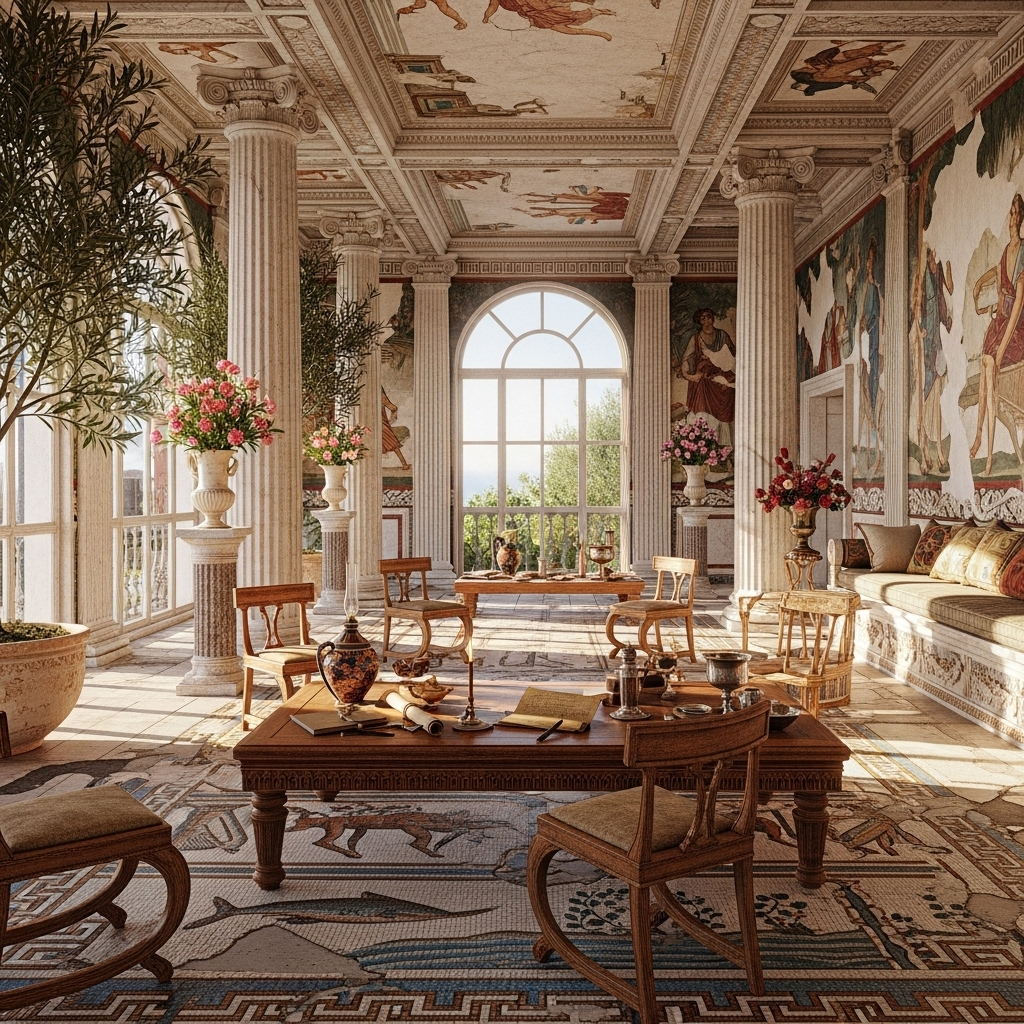
This was when the idea that a home could express personal taste and social status truly began, an idea that would echo across centuries. When the Western Roman Empire collapsed, much of its artistry faded from Europe, but the Eastern Empire, known as Byzantium, continued to thrive. There, classical traditions lived on through shimmering mosaics, domed architecture and intricate ornamentation. Later, Islamic design built upon these ideas, developing its own geometric patterns and arches that would, in time, inspire European interiors once again.
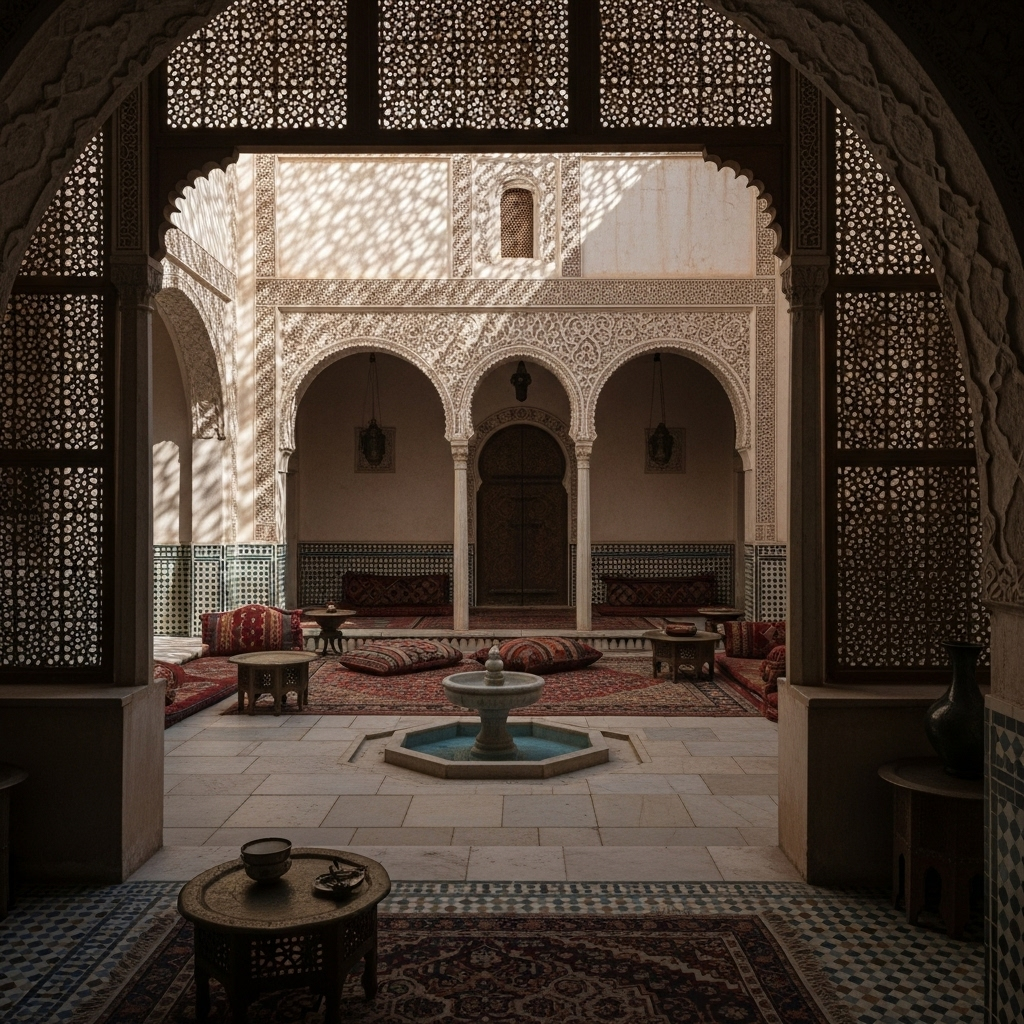
The Medieval Period (5th to 15th century)
After the fall of Rome, life across Europe changed dramatically. For most people, homes were small, dark and practical, built mainly from timber, stone or clay. They were designed to retain warmth and survive harsh winters.
For the wealthy, domestic life took place in fortified castles and manors, where thick stone walls and narrow windows offered protection rather than comfort. Inside, decoration was simple but purposeful. Tapestries — large woven wall hangings — added both colour and insulation. They often depicted religious or historical stories, reflecting how faith and survival defined daily life.
Church architecture also influenced domestic design among the upper classes, with arched ceilings and small windows creating a sense of solemnity. But overall, medieval homes were built to endure difficult times, prioritising warmth, storage and durability over elegance.
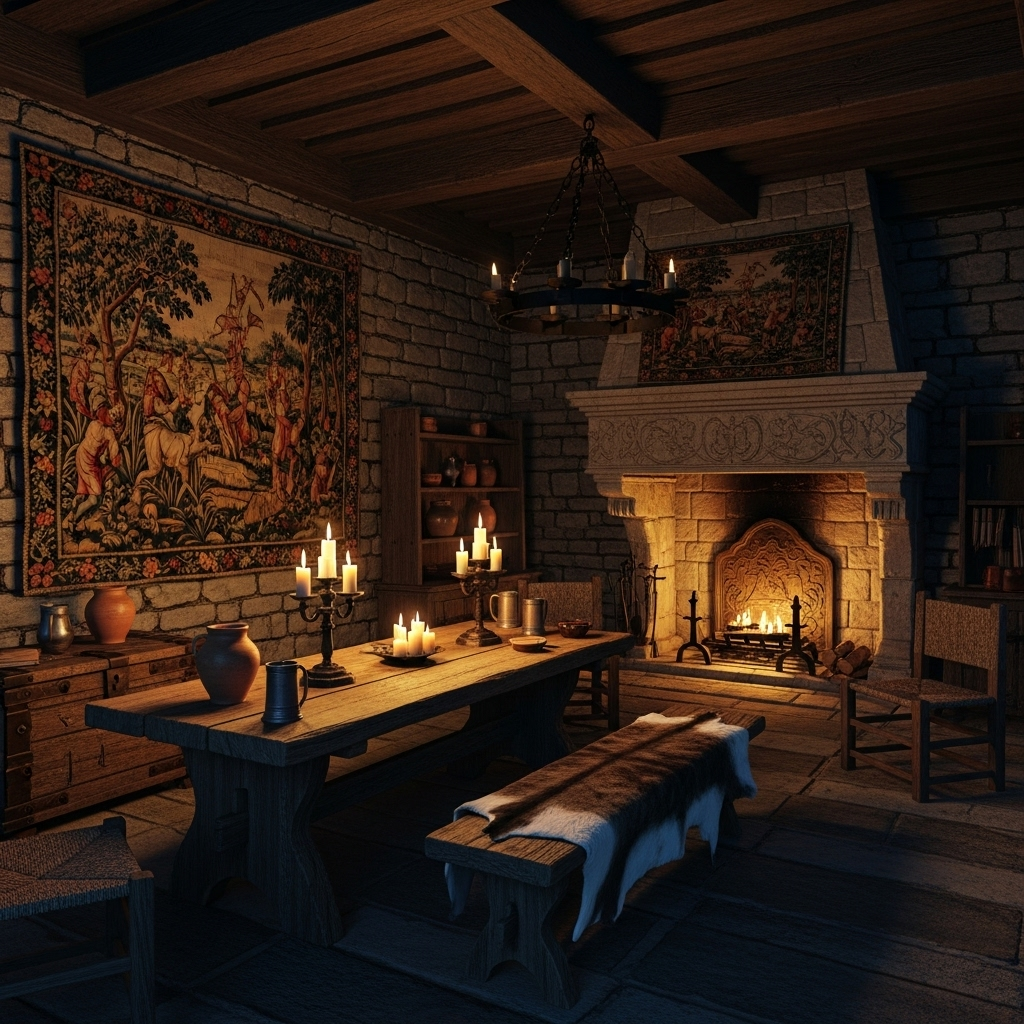
The Renaissance to Rococo (15th to 18th century)
The Renaissance, meaning “rebirth”, began in Italy and spread across Europe. It revived classical ideals of balance and proportion, drawing on ancient Greek and Roman knowledge preserved for centuries in the Byzantine Empire — the Eastern continuation of Rome centred in Constantinople. Wealthy homes embraced symmetry, light and refined decoration — painted ceilings, carved panels and frescoed walls that blended art with comfort.
By the seventeenth century, interiors grew grander with Baroque design, which favoured drama, bold colour and gilded ornament. Rococo followed soon after, softening the mood with pastel tones, floral motifs and curved lines — turning grandeur into grace.
By the late eighteenth century, the ornate style felt excessive.
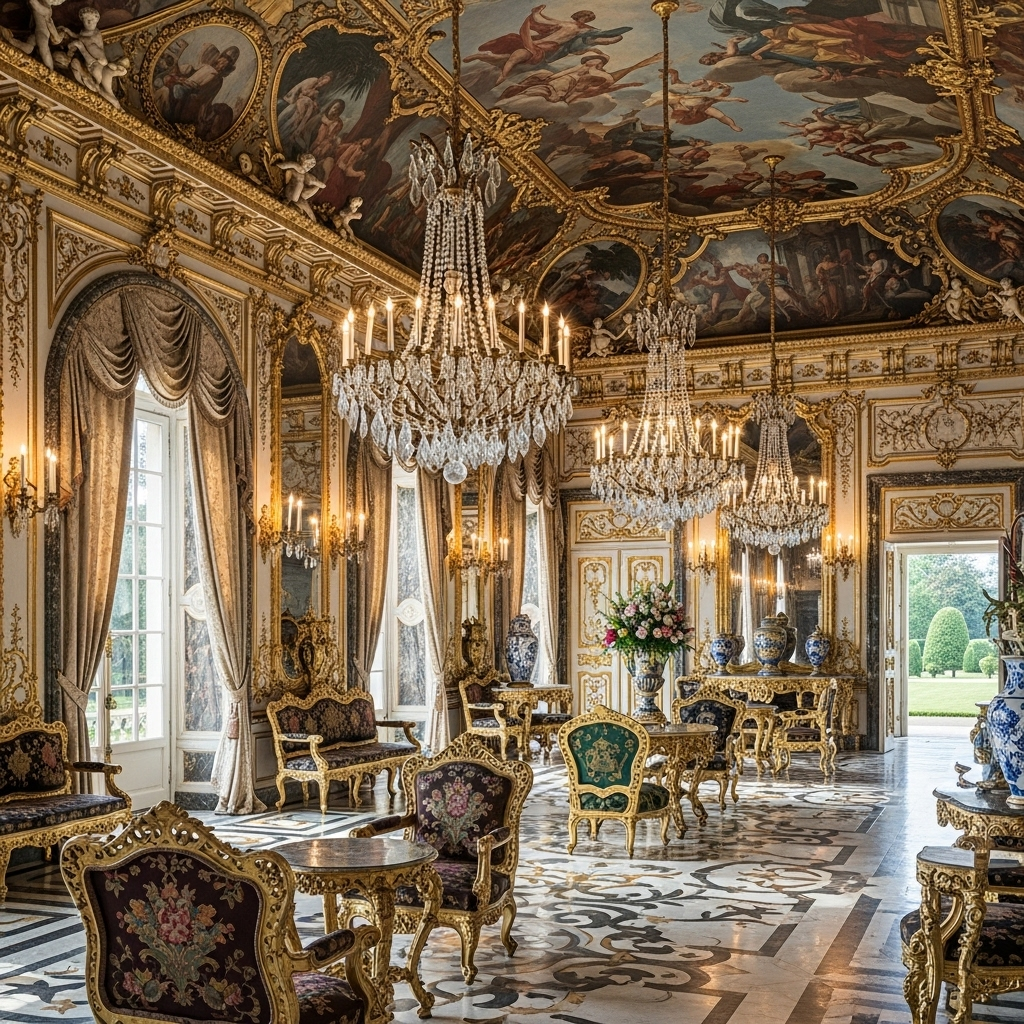
Neoclassical and Victorian Eras (mid 18th to 19th century)
Out of the desire for simplicity came Neoclassicism, inspired by archaeological discoveries of ancient Greece and Rome. Designers admired their symmetry and clarity, favouring straight lines, soft colours and balanced proportions. Neoclassical interiors felt calm and intelligent, expressing a renewed love of reason, harmony and timeless design.
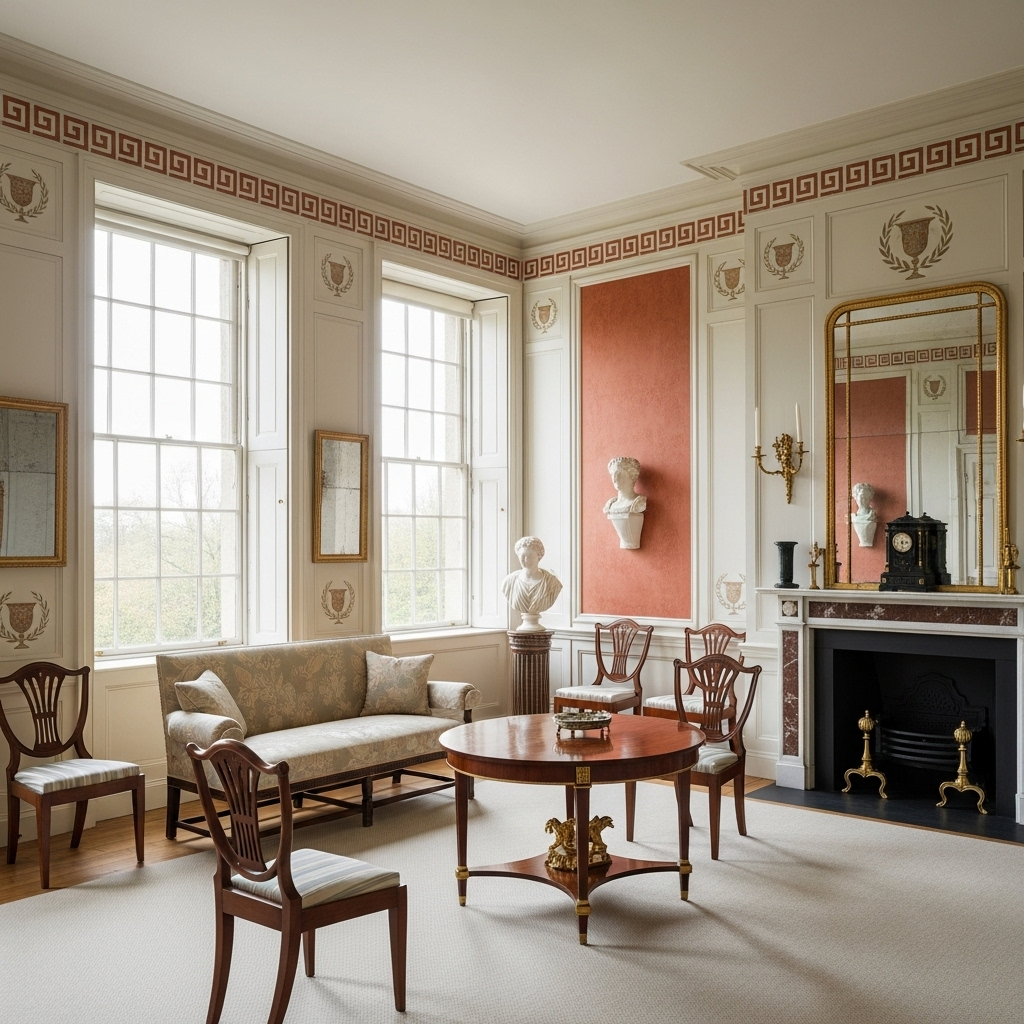
Then came the Industrial Revolution, and the design world transformed once again. Factories began producing furniture and decorative objects on a large scale, making once-luxurious items affordable to many more people.
This shift gave rise to the Victorian era (1837 to 1901), when homes became filled with patterned wallpaper, heavy drapes, dark woods and ornate furniture. Rooms were layered and expressive, reflecting the prosperity of the growing middle class.
Furthermore, global trade during this time also brought new influences from India, China and Africa, adding exotic patterns and materials to Western homes. Interiors became richly eclectic — meaning they mixed many different styles and cultures in one space.
However, as production increased, craftsmanship often suffered. In response, designer William Morris led the Arts and Crafts Movement, which promoted hand-made quality, natural materials and honest design. It reminded people that beauty and integrity should never be sacrificed for convenience.
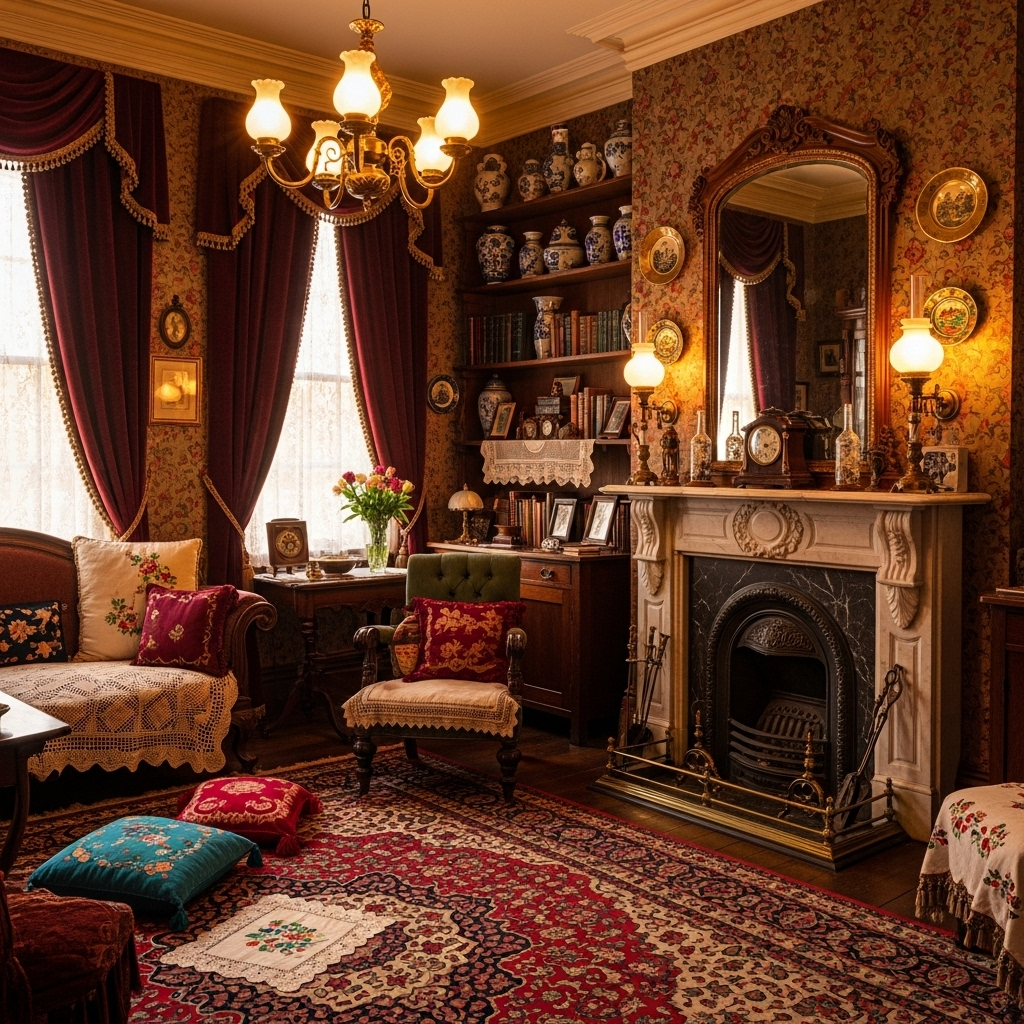
Modernism (1919 to 1930s)
As the twentieth century began, the world longed for simplicity after years of upheaval. Thus, the Modernist movement rose from this desire for clarity and purpose.
In Germany, the Bauhaus school of design taught that art, craft and technology should work together. They introduced the principle that form follows function, meaning every design element should have a purpose. Ornamentation was considered unnecessary; clean lines, open spaces and practicality took centre stage.
Moreover, new materials like steel, glass and concrete became popular because they represented progress and innovation. Modernist homes were bright, efficient and forward-looking — a fresh start for a new century.
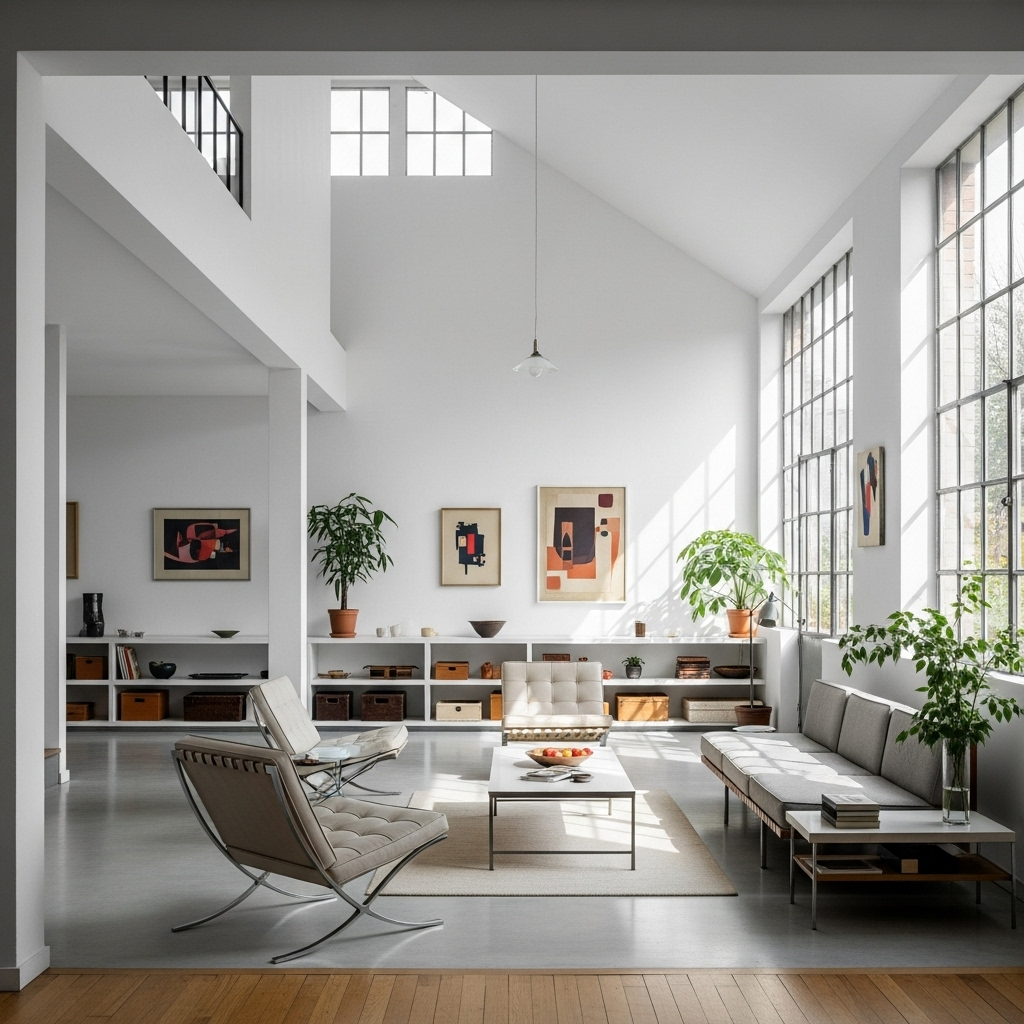
Mid Century Modern (1945 to 1960s)
After the Second World War, optimism returned, and so did warmth and comfort in design. Building on Modernist principles, the Mid Century Modern movement embraced functionality but added friendliness and ease.
Homes featured open layouts that encouraged family interaction, large windows that connected interiors to nature and simple furniture made from wood, metal and glass. Designers such as Charles and Ray Eames and Arne Jacobsen created pieces that were both sculptural and practical.
Importantly, this style focused on accessibility — good design was no longer only for the wealthy. It was for everyone. Organic shapes and natural materials made spaces feel inviting, marking a new era of modern living that still inspires interiors today.
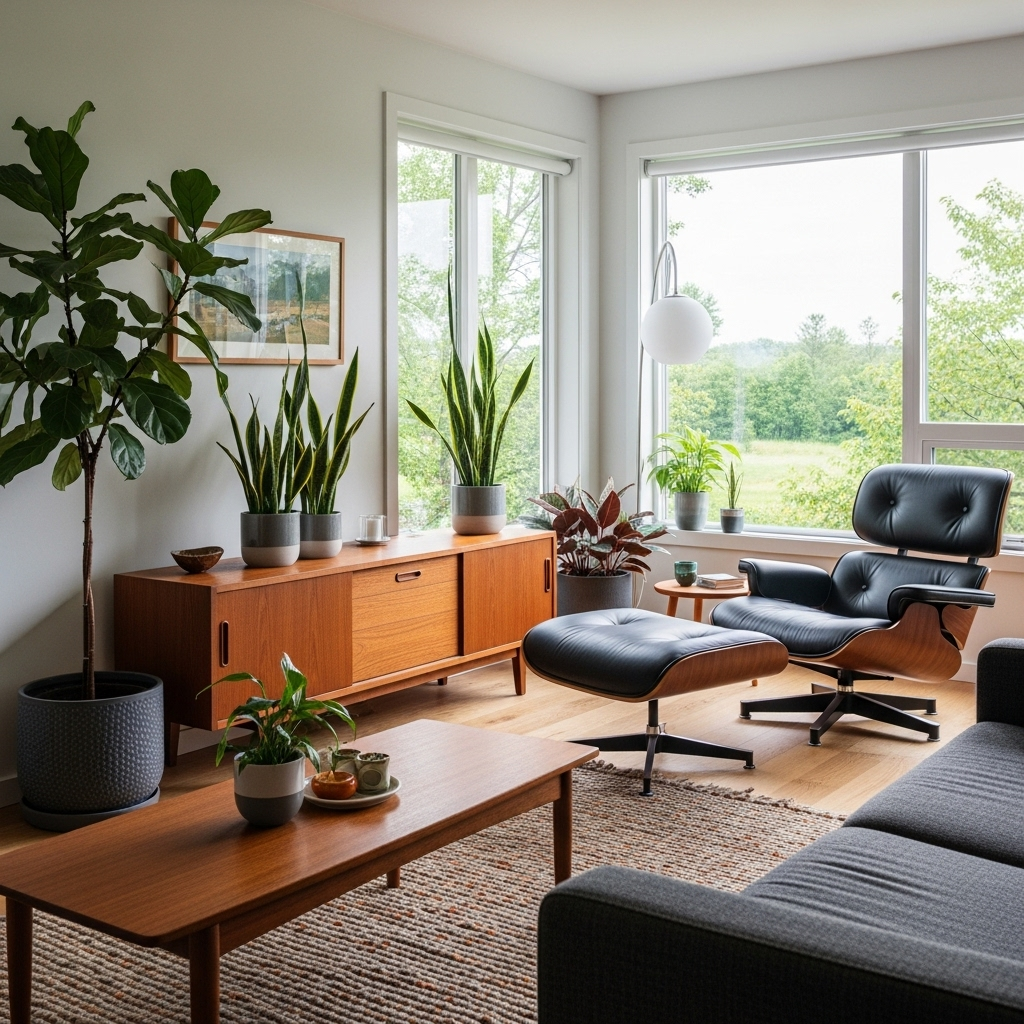
Postmodern and Industrial Styles (1970s to 1990s)
By the 1970s, people began to rebel against the strict minimalism of the previous decades. In response, Postmodernism brought back colour, humour and personality. Designers mixed historical references and bold patterns to create spaces that felt expressive and unique.
At the same time, Industrial design became fashionable, especially in urban areas where old warehouses were being converted into homes. Exposed brick walls, metal pipes and unfinished concrete surfaces became desirable features rather than flaws. The look was raw but stylish, combining practicality with creativity.
Together, these two styles celebrated freedom — the freedom to mix, play and personalise one’s space.
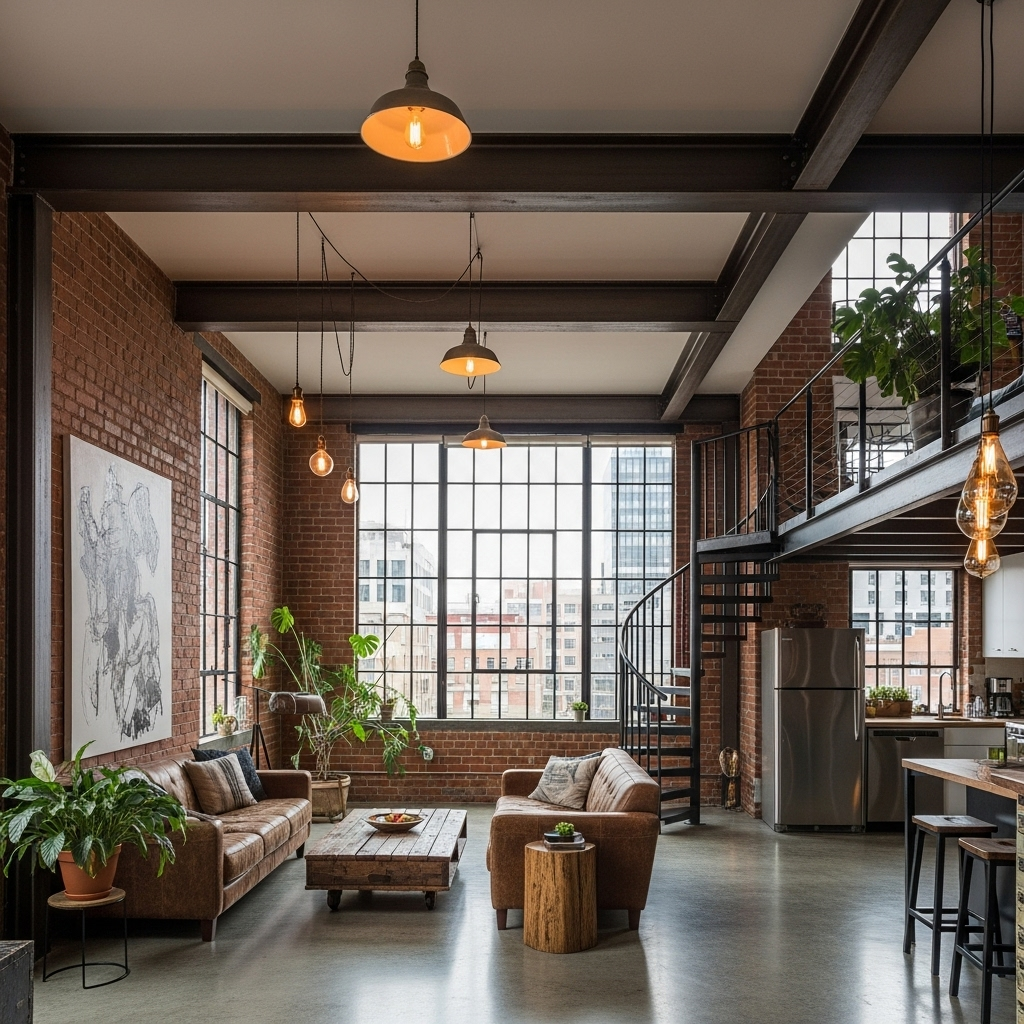
Contemporary Design (2000s to Present Day)
In the twenty-first century, design has become more global and connected than ever before. The internet, travel and social media have made it easy to draw inspiration from all cultures.
Today, modern homes often mix influences from different parts of the world. For example, Japandi design combines Japanese minimalism with Scandinavian simplicity to create calm and clutter-free spaces that focus on natural light and materials.
Additionally, contemporary interiors now value sustainability, wellbeing and comfort above all else. Designers use eco-friendly materials like bamboo, reclaimed wood and natural fibres. Sunlight, fresh air and indoor plants have become essential elements, inspired by biophilic design, which brings nature into our living spaces to boost health and happiness.
Meanwhile, technology has also become a quiet partner in design. Smart home systems now control lighting, temperature and energy use, making homes not just beautiful but efficient.
More recently, the COVID-19 pandemic further transformed how we use our homes. They are now multi-functional spaces where we live, work, exercise and unwind. This shift has encouraged flexible layouts and furniture that can adapt to different needs.
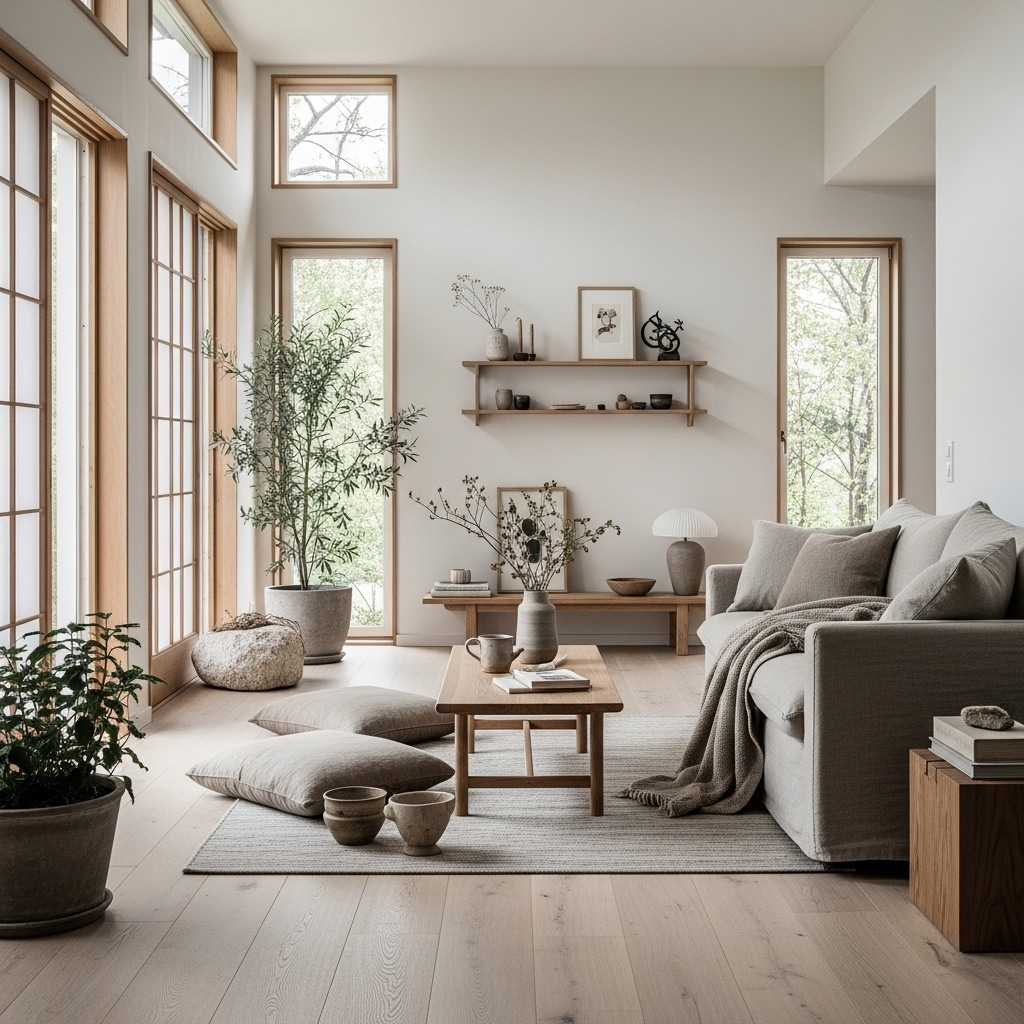
Conclusion
The evolution of residential interior design tells the story of humanity itself. From ancient builders who sought harmony, to medieval ones who sought protection, to Victorians who showed prosperity and modern designers who embraced simplicity and innovation, each era added a new layer of meaning.
Ultimately, our homes today take lessons from every period, with a bit of classical order, a touch of modern efficiency and a whole lot of personal expression. Design continues to evolve because we do.
Ready to design a home that feels timeless yet truly yours?
Book a free design consultation today and let’s bring your vision to life.
